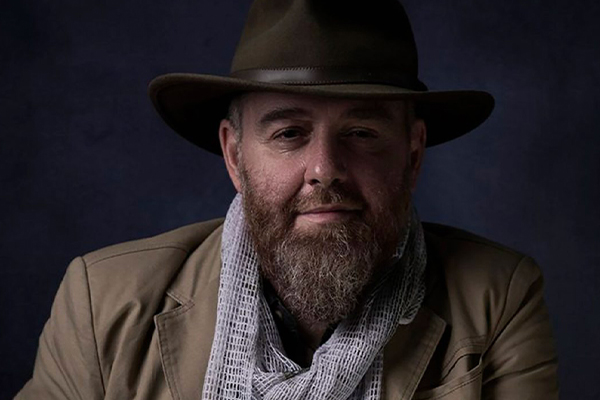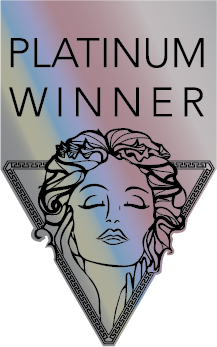
Interview
Marios Forsos
United Kingdom
Marios Forsos has been a photographer for over 15 years with a focus on documentary, storytelling and travel photography which presented him opportunities to work with Lonely Planet Images and more!
1 Can you introduce yourself and talk about how you got into photography?
I originally come from Greece but have spent most of my life in London - I originally studied Economics (going all the way to a PhD) and sort of flowed into consulting, but photography has always been the one thing that has kept me sane. I have been a working photographer for more than 15 years focusing more on documentary, storytelling and travel photography working with people like Lonely Planet Images (before the acquisition), National Geographic, Geo, Conde Nast and others. I got into photography in a roundabout way - someone gave me a book on Time-Life photographers when I was 12 and I think that was pretty much it. I read the whole thing, cover-to cover, in 1 day and the next day I went to the library and spent a whole day there poring over the entire shelf of National Geographic magazines. Remember, this was 1983, I was in a small town in northern Greece and my english was, well, limited. Within 6 months my parents had enough of nagging and bought me my first SLR from a used camera store and that was it - from the moment I saw the first images appear before me in the darkroom, there was no going back.
2 Where did you study photography?
At the feet of some incredibly talented and charismatic photographers, sometimes sitting quietly for hours during a studio shoot and soaking up and knowledge, others working as an assistant during National Geographic shoots across the Balkans and the Middle East. I learned by reading everything that crossed my path (even before the internet was a thing but certainly after) and experimenting, again and again, with what I had learned. This rather unusual way taught me something no course can: the value of perseverance and ingenuity, of having to do with very basic gear and to always find solutions not excuses to problems and curveballs. I learned preparation and visualisation by seeing how long and arduous a NG shoot was and how pre-visualisation was critical for success. But if there is one place where I learned the most is on the field - through countless failures, frustration, tears and despair when nothing would go my way and I still had a project to deliver. And trust me, there
3 Do you remember your first shot? What was it?
Funnily enough, I do - as I said before, I got my first SLR (a Minolta XG-9 with a 50/1.8 manual lens) in a used camera store in Bern, Switzerland, while on holiday. The kind people in the store loaded a film, showed me the basics and I was let loose. I spent the next hour sitting on a bench in the cold reading the manual (well, trying to read the manual - I was 13 and was still learning english) and then lifted the camera to my eyes to shoot. The first shot was, predictably, of my parents on a stone bridge (with my mother wearing this ridiculous massive coat) with the city at the background. I would proceed to finish three more rolls of film during that week-long trip, but this was the first one. When we returned and I saw the image forming, I nearly cried - I had created something. Sadly, 80% of the other shots were complete disasters - it would take me almost 35 years to get a success rate of 80% - but I knew right there and then that this was what I wanted to do.
4 What equipment do you use?
Today I shoot using Nikon mirrorless cameras (a couple of Z9s and two Z6iis) and the latest S series lenses (with some specialist F-mount ones complementing the set). I use Godox lights with the AD1200Pro being my main go-to light with a number of 600BMs, AD300 and AD200 Pros thrown in to the mix - their price-to-performance ratio is second to none, they are versatile and, frankly, if I were to lose them all tomorrow, I would not need to mortgage my house to replace them. On other elements, I use K&F filters, 3-Legged Thing tripods, GoPros and Parrot drones and a more-than-I-should collection of light modifiers, stands etc. I have to say however that there are 4 large wardrobes in my garage packed with historical gear - from way-too-many Nikon strobes, Pocket-wizards, smoke and wind machines, backdrops etc etc.
5 What compliment inspired/touched you the most?
I was two actually, both of which I will never forget: the first was when I showed a agori in Varanasi the picture I had taken from him - the first time anyone had ever photographed him slowly, collaboratively and with a strobe. He looked and the image for a good 2 minutes and then, through the translator, said
6 What inspires your unique storytelling?
In a worda - insight. In an age where humanity produces more than a billion images per day, where photographers everywhere shoot pretty much the same images again and again, I strive to find and tell a story differently: by using carefully thought-out, researched, planned and constructed images to get to the very soul of the people I
7 What THREE (3) words describe your photography style?
I would say prepared, emotional and insightful. Prepared because every single aspect of every shot is the result of research, planning and a lot of preparation, emotional because my pictures are not created for Likes, but to give birth to emotions in the viewer, to elicit heart-felt responses. And insightful because my main aim is to show the people not as they may initially appear or present themselves before me, but as they really are, as they feel themselves to be deep inside.
8 Congratulations! As the winner of the MUSE Photography Awards, what does it mean for you and your team to receive this distinction?
It is recognition that my approach has reached out and touched people - that the story, as told by my images, came across as I hoped it would. But it also means that there is a world where different, conceptual and carefully prepared travel images can thrive.
9 Can you explain a bit about the winning work you entered into the MUSE Photography Awards, and why you chose to enter this project?
The work is part of a long term project to document the tribes of the Amazonia region (not only within Brazil, but beyond) not only through the lens of their plight or as objects of curiosity, but as amazing, awe-inspiring parts of our world, to celebrate their culture and bring to the world their stories despite the challenges. The idea is to show just how rich the Amazonia region is because only then I feel will the world may realise what we stand to lose. I hope this win will garner the support the project urgently needs to expand quickly and cover, within the next 12-18 months the remaining tribes.
10 How has winning an award developed your career?
I have always seen competitions as a chance to measure myself against other photographers and to learn, by my loses, about the world, its trends and, of course, to see how I can improve. Winning and awards are, in this context, simple indicators of what I may be doing right and, ultimately, recognition of how I look at photography deep inside.
11 Name 1-3 photographers who have inspired you.
Oh, that
12 What was the best piece of advice you were given starting out, by a mentor or your role model?
I was lucky to have been given this advice extremely early in my life and even luckier for that seed to have found room to grow over the years. The advice was simple: be original, always seek originality and always prepare to put in the extreme hard work required to find and realise it. This has always been like a beacon and a driver throughout my life - it has driven me to prepare exhaustively for every single thing, to spend time with my subjects - to think before I even pick up a camera. These days I shoot maybe a thousand images for a project and this translates to at least 1hr of preparation for each one.
13 What advice would you give someone who would like to become a photographer today?
Quite unsurprisingly, it would be the one I was given: be original! Always. Look at pictures you like, at photographers you admire, but please be original. There are literally ten thousand images of the blue-eyed boy in Ethiopia and they
14 What is your key to success? Any parting words of wisdom?
It
15 How do you stay in that space of being receptive to new information and knowledge?
By looking at some of the amazing work produced by other photographers from every photographic genre out there and realising that there is simply so much for me to learn, so much more effort I need to put into telling the stories that matter effectively. People tend to think it
16 Anything else you would like to add to the interview?
A hope really - if anything. That as photographers we go back to exploring light, to stop hunting for quick gains and for exposure and start creating impactful images that tell real stories. We are responsible - in a way - of preserving our cultural memories and we





